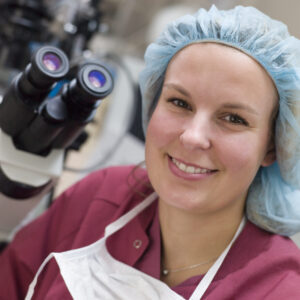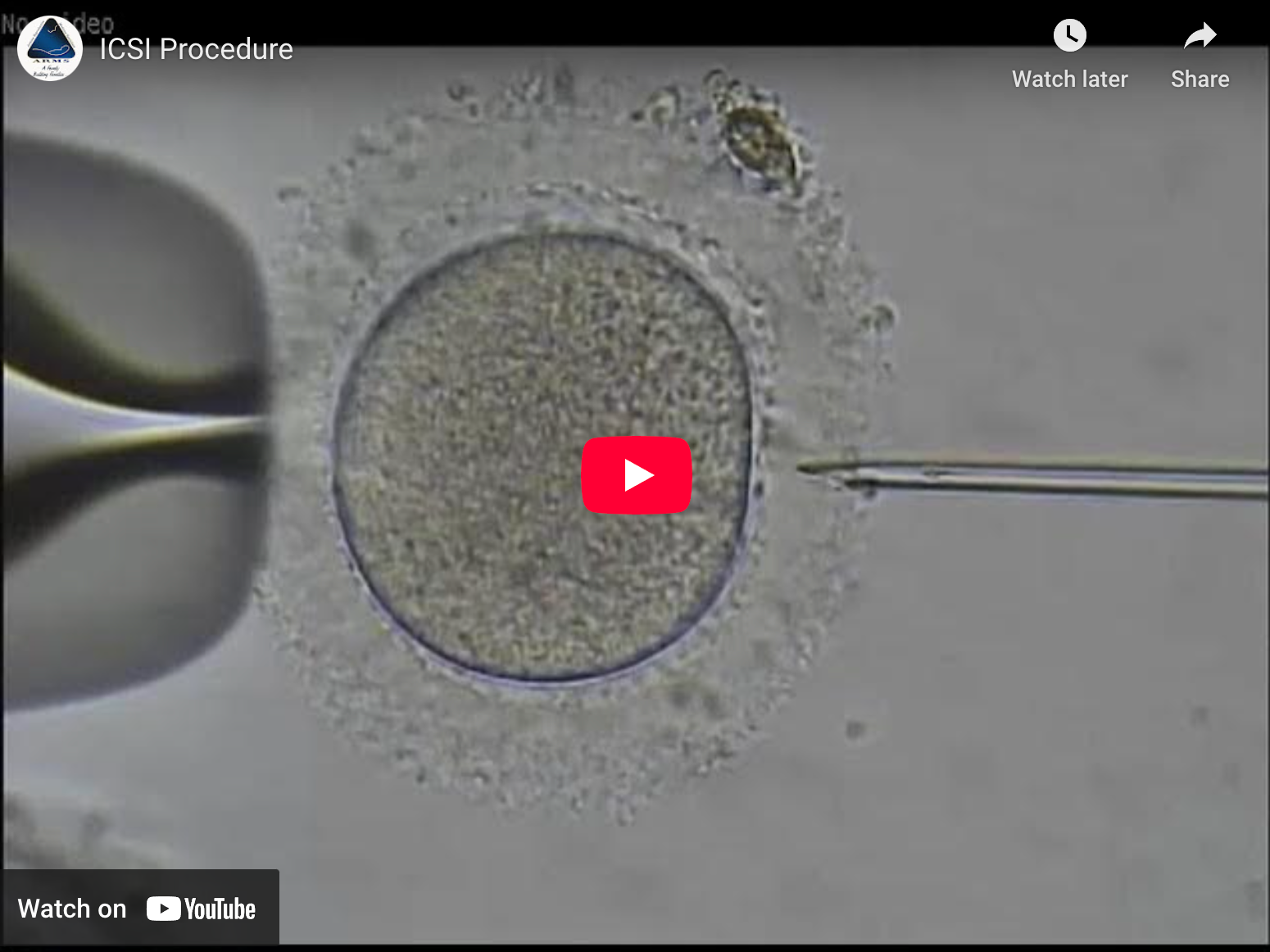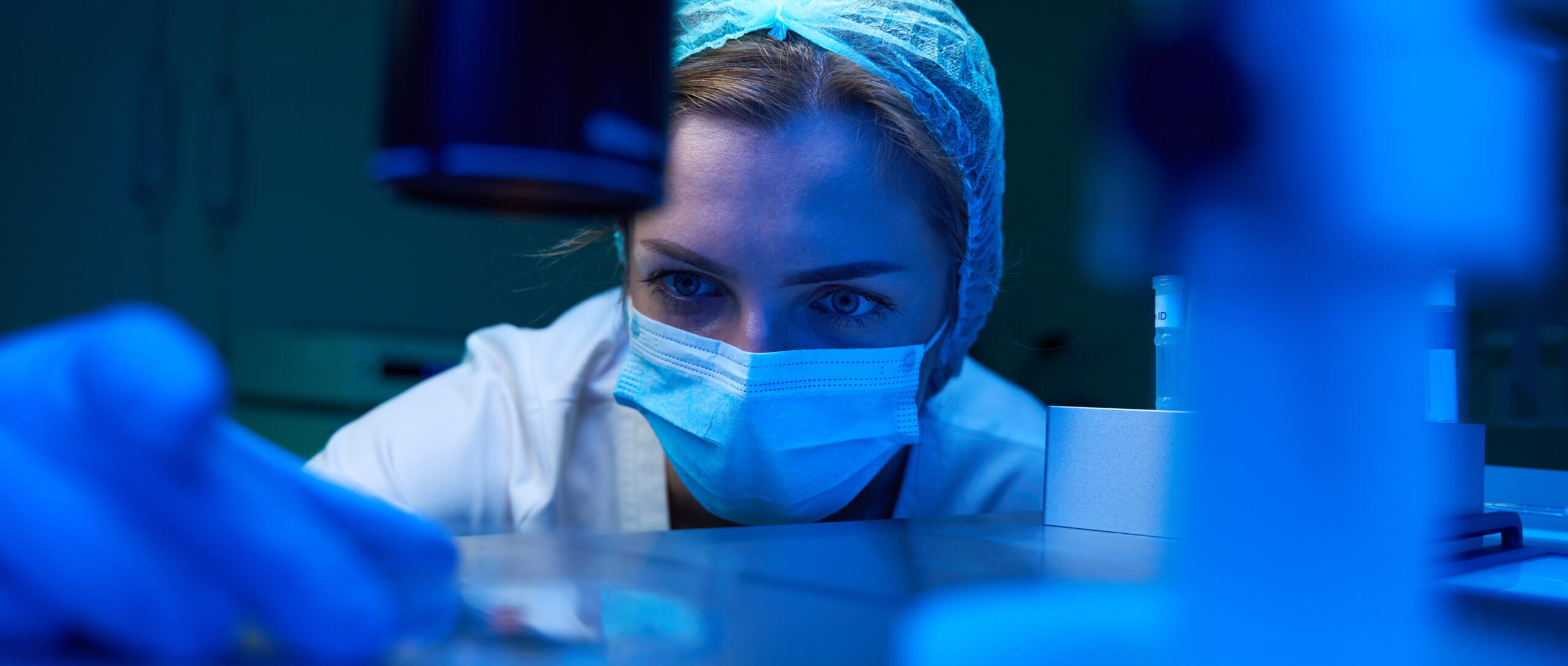ICSI at a glance
- Intracytoplasmic sperm injection (ICSI) is a procedure utilized only during in vitro fertilization (IVF) that injects one healthy sperm into the cytoplasm of a female egg where fertilization occurs.
- An important aspect of conception is that the sperm must not only reach the egg but break through its outer layer in order to fertilize it, which is often a problem for a variety of reasons.
- This specialized procedure is particularly beneficial for couples facing male-factor infertility, offering a precise method for fertilizing an egg in the IVF lab and increasing the chances of successful conception.
- We primarily utilize this procedure when there are problems with sperm health or the man’s ability to effectively produce it; ICSI can also help when a previous IVF cycle has not been successful in achieving fertilization.
- ICSI achieves fertilization in approximately 50% to 80% of eggs, though that does not guarantee IVF success, which can be affected by many other factors than egg fertilization.

What is ICSI?
Intracytoplasmic sperm injection is a laboratory procedure that can be an option with IVF in which a single sperm is directly injected into the cytoplasm of an egg to achieve fertilization. Unlike conventional IVF, where 50,000 or more sperm are placed next to an egg in a petri dish in the lab to encourage fertilization, ICSI takes a more direct approach.
This procedure can address certain barriers to fertilization, particularly aspects of male infertility related to sperm health and production. ICSI is performed as part of the IVF process and occurs after retrieving eggs from the ovaries. It does not disrupt the normal IVF process. Specific steps of the procedure are covered below.
ICSI success rates
Intracytoplasmic sperm injection has significantly improved fertilization rates for couples facing male-factor infertility and other challenges specified below. While fertilization success depends on various factors – including egg quality, sperm health and the age of the female partner – ICSI has become a standard method of increasing success in the fertilization aspect of conception for many couples.
According to the American Society for Reproductive Medicine ICSI fertilizes 50% to 80% of eggs. This is comparable to the fertilization rates achieved by healthy sperm naturally. Pregnancy and live birth rates depend on individual circumstances and the quality of the embryos transferred.
Who can benefit from intracytoplasmic sperm injection?
ICSI is particularly beneficial in cases of male-factor infertility but can also address other fertility concerns. Here are some scenarios in which we may recommend the procedure during IVF.
- Low sperm count: When the quantity of sperm in a semen sample is insufficient for natural or conventional IVF fertilization.
- Poor sperm motility: If sperm cannot move efficiently to reach and penetrate the egg.
- Abnormal sperm shape (morphology): Structural issues in sperm that can prevent them from reaching or fertilizing an egg.
- Obstructive azoospermia: This is when sperm cannot join the semen that is released during ejaculation due to blockages in the reproductive tract. Sperm can be surgically retrieved and injected into the egg cytoplasm.
- Failed fertilization in previous IVF cycles: If standard IVF attempts did not result in fertilized eggs, ICSI can improve success rates.
- Failed IUI. ICSI is sometimes used when intrauterine insemination (IUI) has failed and when unexplained infertility is diagnosed.
- Unexplained infertility: In cases where no clear cause of infertility has been identified, intracytoplasmic sperm injection may improve fertilization outcomes.
- Use of frozen or donor sperm: Sperm with lower viability after freezing or donor sperm can be carefully selected and injected using ICSI.
Steps in the ICSI process
The process involves several steps, each requiring precision and expertise. The male partner provides a semen sample, usually through masturbation. Sperm can be obtained surgically if necessary. Advanced sperm preparation techniques are used to select the healthiest sperm.
In the IVF laboratory, an embryologist uses a specialized microscope and microneedle to immobilize a single sperm, suck it into the microneedle and inject it directly into the cytoplasm of a mature egg. The eggs are placed in a controlled incubator, and embryologists monitor them for signs of successful fertilization within 24 hours.
Fertilized eggs (now embryos) are observed for several days to assess their growth and quality. The best-quality embryo(s) are then transferred to the uterus to initiate pregnancy. Remaining embryos can be cryopreserved for future use.

Potential risks and considerations with ICSI
We discuss potential risks and considerations with patients before the ICSI procedure.
- Egg damage: A small percentage of eggs may be damaged during the injection process, making them unsuitable for fertilization. This is very rare.
- Fertilization failure: Some eggs may not fertilize despite ICSI, just as fertilization does not always succeed naturally.
- Post fertilization: Eggs successfully fertilized may stop growing as embryos.
- Genetic concerns: When male-factor infertility is caused by genetic abnormalities, there is a risk of passing those issues to offspring when using ICSI, which is also the case in natural fertilization and IVF without ICSI. Genetic counseling and testing may be recommended in such cases.
Questions?
Call us at (602) 351-5327 or schedule an appointment below. Let’s talk.

